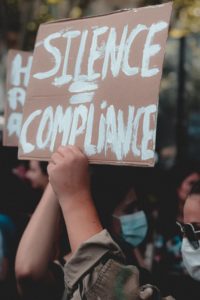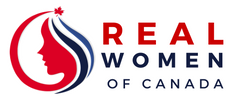 Prime Minister Justin Trudeau loathes anything or anyone who impedes his agenda. Consequently, Trudeau was in a fury when the Freedom Convoy travelled across Canada to protest his policies.
Prime Minister Justin Trudeau loathes anything or anyone who impedes his agenda. Consequently, Trudeau was in a fury when the Freedom Convoy travelled across Canada to protest his policies.
His reaction to this perceived insult to his authority was to declare a “public order emergency”, under the Emergencies Act, on February 14, 2022, which provided him with the power to, among other things: shut down public assemblies, conscript services (tow trucks to remove the vehicles stationed on Ottawa’s streets), and to freeze the bank accounts of those who contributed to the convoy. To impose the Emergencies Act, however, Trudeau had to first provide a reason for this monumental action.
Trudeau began with describing the protesters as a “fringe group” of “racist”, “hatemongers”, “misogynists”, “white supremacists”, who held “unacceptable views”. Trudeau clearly was attempting to vilify and marginalize the protesters to create public resentment and disgust. He was so angry at the protesters that he reacted like a playground bully, hurling mean-spirited insults at them on Twitter until he ran out of names. He accused them of anti-Semitism, Islamophobia, anti-black racism, homophobia and transphobia.
Trudeau refused to meet with the protesters because he claimed that they were supported by extremists and foreign funding. The Deputy Director of Intelligence, at the Financial Transactions and Reports Analysis Centre of Canada (FINTRAC), refuted this. In February, Barry MacKillop told a meeting of the Standing Committee on Public Safety and National Security that there were no signs that what was happening in Ottawa was a form of ideologically motivated, violent extremism. Moreover, he further indicated that FINTRAC had not seen a “spike” in suspicious transactions associated with the convoy.
The mainstream, government-funded media in Canada jumped in to support Trudeau. They had nothing good or objective to say about the protesters and provided a distorted description of the situation.
Trudeau’s lies were supported by further lies from Public Safety Minister Marco Mendicino, who stated that the protesters are “a very small, organized group, driven by an ideology to overthrow the government through whatever means they may wish to use”. Former Governor of the Bank of Canada and the Bank of England, Mark Carney, supported Trudeau by calling the protest “sedition” and “insurrection”. Carney claimed that the convoy’s goal was “undermining our democracy and the rule of law”. One thing you can always count on from Mark Carney is his extremist, left-wing positions, such as his strident objection to Brexit and his foolish and unsuccessful attempt to use the Bank of England to promote his own green, ecological views – which were no business of the bank at all.
The objective of imposing the Emergencies Act was to supress opposition to Trudeau’s authoritarian policies surrounding COVID mandates and mandatory vaccinations and the denial of civil rights. The fact is that the Emergencies Act is intended to be used only in extreme cases, such as war or circumstances that “seriously endanger the lives, health or safety of Canadians”. In no way did the protest reach this level of danger to society.
Nonetheless, on February 14, 2022, Trudeau made a declaration of a “public order emergency” under the Emergencies Act, which was subsequently confirmed a short week later, on February 21st, by the House of Commons in a 185-151 vote. The Bloc Quebecois and the Conservatives voted against the motion, but the NDP, led by Jagmeet Singh, voted for it, not on the basis of any principle, but because the motion would be a no-confidence vote for Trudeau and could lead to a new election. Thus, Singh’s support was based solely on what was best for Singh, not the country. The NDP has no money to engage in an election, and Singh is also aware that NDP voter support is declining so that an election would result in a loss of seats for his party. This would mean that Singh would lose the power and influence he is currently exercising by propping up Trudeau’s minority government.
The Effect of the Emergencies Act
The declaration made under the Emergencies Act resulted in the arrests of the protest leaders and other peaceful protesters, the dispersal of the convoy, the seizure and the freezing of bank accounts, without court order, for those who have contributed to the protest (even those making small donations of $20).
The declaration did not go well for Trudeau and the Liberal Party.
1. The biggest problem for Trudeau, was the provision which provided that bank accounts of those who donated to the convoy could be frozen. This occurred in 210 bank accounts. The Canadian Banker’s Association was alarmed with this provision as it undermined faith and trust in the security of the banking system.
This provision revealed how easy it was for the government to seize and control financial information. This could easily be extended to include credit cards, retirement accounts, insurance, loan access accounts, etc., all without due process. In short, this provision provided a digital identity and social tracking system for the government that has the potential to control citizens and businesses to conform to government policies. Digital identity is exactly what the Davos World Economic Forum (WEF) wants, and Justin Trudeau inadvertently broke the code of silence about their “Build Back Better” society, which is to create an efficient registration and compliance system to control the public.
2. Seven of the Canadian provinces objected to the declaration being made on the basis that it was not justified, and they requested that it not be applied to their provinces. The seven objecting provinces were Alberta, Saskatchewan, Manitoba, PEI, Nova Scotia, New Brunswick and Quebec.
3. Alberta brought a legal challenge against the imposition of the Act, as did the Canadian Civil Liberties Association (CCLA), the Canadian Constitution Foundation (CCF), and the Justice Centre for Constitutional Freedoms (JCCF) before the federal court that the protests did not meet the threshold to invoke the Act. These groups are continuing with their court actions because they want the word “emergency” properly defined, as they do not want a future government to invoke it, as Trudeau has done, to stop a protest.
4. Trudeau was unable to provide any intelligence or facts to the House of Commons to support his position that the government/state of Canada had been endangered by the protests. The Senate, although consisting of a large number of Trudeau-appointed, left-of-centre individuals, was also troubled by the lack of intelligence and facts to support the imposition of the Act. When the debate began in the Senate, on Tuesday February 22nd, to confirm the declaration, a number of senators from all parties started asking hard questions and demanded to see the information that the government relied upon in making the declaration. When it became clear that the Senate was not going to rubber stamp the declaration, Trudeau revoked the declaration on Wednesday the 23rd rather than face defeat in the Senate.
5. Conservative Interim Leader Candice Bergen signed a motion to revoke the government’s declaration, under s. 59 of the Emergencies Act, that provides at least ten Senators or at least twenty MPs may make a motion to revoke a declaration made under the Act. This motion would have ensured another debate on the imposition of the Act, which Trudeau was reluctant to face since it would require him to explain why he was continuing to enforce a national state of emergency when it appeared that there were no longer any protests in Ottawa and all the borders had been cleared.
6. A poll by Mainstreet Research showed a growing backlash against Justin Trudeau and the Liberals in regard to the invocation of the Emergencies Act. According to the poll, the Liberals were at 31%, but the Conservatives, who supported the protest, were up 10 data points at 39%. The NDP appeared to be paying a price for backing Trudeau on the Emergencies Act as its support fell from 17% to 15%.
The polls showed that, despite the Trudeau government and the media’s attempts to paint the protest as an extremist movement, they had failed.
7. Not only was Trudeau’s popularity crashing domestically but also internationally. Trudeau, who imagines himself to be the world’s leader in progressive policies was mocked and ridiculed around the world for his pretentious and failed attempt to assert control over Canadians. The New York Times, Wall Street Journal, UK Economist and Financial Times, respected influential publications with global audiences, criticized Trudeau for imposing the Emergencies Act. For a narcissist like Trudeau, this was a serious blow. He wanted to put the episode of the Emergencies Act behind him.
On February 23, 2022, Trudeau revoked the Emergencies Act, less than 48 hours after it was passed in Parliament.
Conclusions
While debate over this sad chapter of Canadian history has only just begun, it is not too early to draw some preliminary conclusions. First and foremost, is that this was never a “public order emergency” but rather a “Trudeau/Liberal political emergency”, entirely of Trudeau’s making. As Candice Bergen noted in her statement, respecting the revocation of the declaration, “Trudeau introduced it in the first place for his personal, political gain. He revoked it now for the very same reason.”
Second, the underlying causes of the Freedom Convoy’s protest were unreasonable COVID mandates and restrictions, and the denial of civil rights for Canadians. The convoy consisted of ordinary Canadians who, after two years of government and media lies, are fed up with the disconnect between themselves and the government.
The last two years’ incompetence leading up to this point is a clear indication of not only the need for greater transparency and accountability, but also the need for real change in our politicians and government/media institutions.
